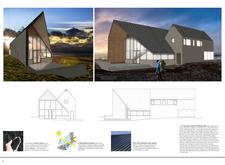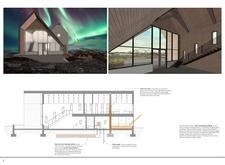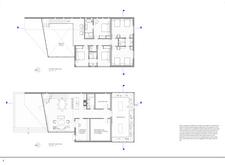5 key facts about this project
This architectural endeavor is multifaceted, designed to accommodate [describe specific functions, e.g., public gatherings, educational programs, or recreational activities]. The layout emphasizes open spaces that encourage interaction, highlighting the project’s commitment to community connectivity. The building's placement within the landscape is intentional, promoting accessibility and allowing for seamless transitions between indoor and outdoor environments.
The architectural form is characterized by a series of carefully designed elements that contribute to its overall impact. The façade, for instance, employs a mix of materials, combining [materials such as glass, concrete, and wood] in a manner that not only enhances visual appeal but also meets practical requirements such as energy efficiency and durability. Large windows invite natural light, creating bright, airy interiors that enhance the user experience. This emphasis on transparency not only connects the inhabitants with nature but also blurs the lines between inside and outside, encouraging a flow of activity throughout the space.
One noteworthy aspect of the project is the use of sustainable design strategies. The architects have integrated passive design principles such as [include examples like cross ventilation and solar shading], which work in harmony with the climate to reduce energy consumption. Roof gardens and green walls promote biodiversity while contributing to the aesthetic quality of the project. These unique design approaches reflect a contemporary understanding of architecture as a solution to environmental challenges, pushing the boundaries of traditional building practices.
Internally, the spaces are thoughtfully arranged to serve various functions without compromising the overall flow. The main hall serves as a central hub, offering flexibility for different types of events and gatherings, while smaller meeting rooms provide intimate settings for discussions or workshops. The choice of materials continues inside, where the warmth of wood contrasts with the sleekness of metal accents, creating a welcoming atmosphere conducive to collaboration and creativity.
Outdoor spaces, including gathering areas and landscaped gardens, further expand the functionality of the project. These areas are designed not only for aesthetic pleasure but also to host community activities and promote social interaction. Pathways meander through the site, encouraging exploration and engagement with the natural surroundings, reinforcing the connection between the architecture and its environment.
The project stands out due to its emphasis on community engagement and sustainability, effectively addressing the needs of its users while considering broader environmental implications. By prioritizing transparent communication and interaction between the building and its users, the design embodies a modern approach to architecture that values collaboration and inclusivity.
For those interested in understanding the intricate details of this architectural project, exploring its architectural plans, sections, and overall design ideas will provide deeper insights into its thoughtful execution and innovative strategies. This exploration into the project's presentation can enhance appreciation for how architecture can contribute meaningfully to both the built environment and the community it serves.


























